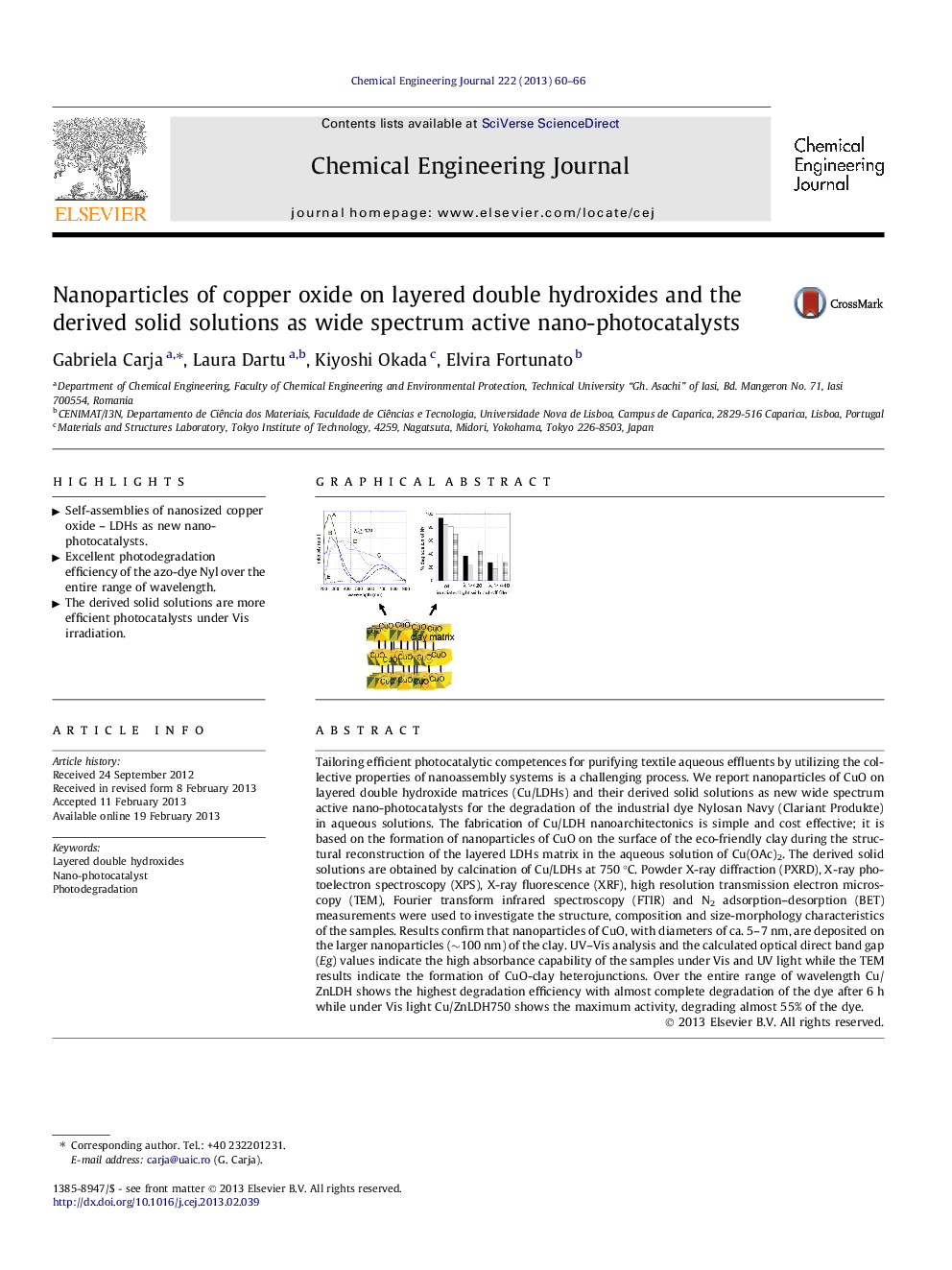| Article ID | Journal | Published Year | Pages | File Type |
|---|---|---|---|---|
| 148544 | Chemical Engineering Journal | 2013 | 7 Pages |
Tailoring efficient photocatalytic competences for purifying textile aqueous effluents by utilizing the collective properties of nanoassembly systems is a challenging process. We report nanoparticles of CuO on layered double hydroxide matrices (Cu/LDHs) and their derived solid solutions as new wide spectrum active nano-photocatalysts for the degradation of the industrial dye Nylosan Navy (Clariant Produkte) in aqueous solutions. The fabrication of Cu/LDH nanoarchitectonics is simple and cost effective; it is based on the formation of nanoparticles of CuO on the surface of the eco-friendly clay during the structural reconstruction of the layered LDHs matrix in the aqueous solution of Cu(OAc)2. The derived solid solutions are obtained by calcination of Cu/LDHs at 750 °C. Powder X-ray diffraction (PXRD), X-ray photoelectron spectroscopy (XPS), X-ray fluorescence (XRF), high resolution transmission electron microscopy (TEM), Fourier transform infrared spectroscopy (FTIR) and N2 adsorption–desorption (BET) measurements were used to investigate the structure, composition and size-morphology characteristics of the samples. Results confirm that nanoparticles of CuO, with diameters of ca. 5–7 nm, are deposited on the larger nanoparticles (∼100 nm) of the clay. UV–Vis analysis and the calculated optical direct band gap (Eg) values indicate the high absorbance capability of the samples under Vis and UV light while the TEM results indicate the formation of CuO-clay heterojunctions. Over the entire range of wavelength Cu/ZnLDH shows the highest degradation efficiency with almost complete degradation of the dye after 6 h while under Vis light Cu/ZnLDH750 shows the maximum activity, degrading almost 55% of the dye.
Graphical abstractFigure optionsDownload full-size imageDownload as PowerPoint slideHighlights► Self-assemblies of nanosized copper oxide – LDHs as new nano-photocatalysts. ► Excellent photodegradation efficiency of the azo-dye Nyl over the entire range of wavelength. ► The derived solid solutions are more efficient photocatalysts under Vis irradiation.
